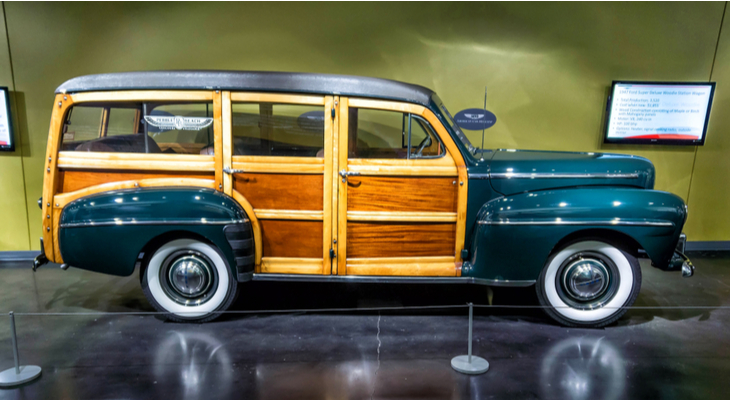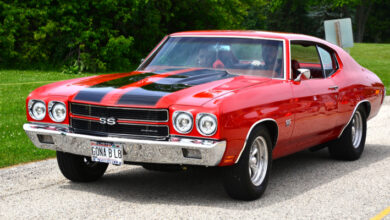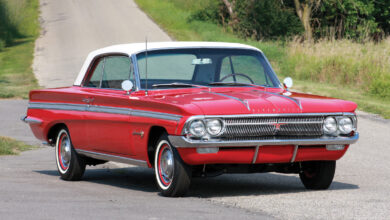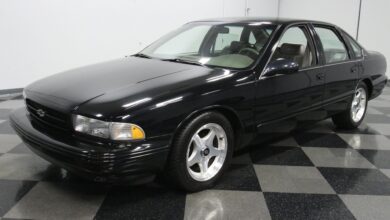Going with the Grain of the Ford Woodie Station Wagon

In the early days of the automotive industry, stamped steel was too expensive to be a viable construction material for car framework. It may seem ridiculous in the modern frame of mind, but wood was the primary material used for automotive construction. Considering automobiles are the result of horse carriage innovation, it makes sense.
From buggies to cars, wood was more affordable and always available, making it an ideal choice. Even though steel is lighter than wood, weight was not a top priority in the early 1900s. Wood, on the other hand, was readily available with what seemed like an infinite supply at the time.
In fact, Henry Ford believed wood would remain an important resource within the industry with conviction. He purchased over 400,000 acres of woodlands in Michigan’s Iron Mountain region.
Ford’s 1929 Model A was the first mass produced woodie vehicle, a style that proved popular well into the future.
The 1929 Ford Model A paved the foundation for the American automaker’s woodie station wagon success. Of course, other manufacturers quickly followed in their copycat ways. The woodie styling even spread to overseas manufacturers.
However, Ford’s first mass produced woodie is a workhorse, designed for functional purpose rather than stylish flair. Eventually, skilled carpenters took notice while learning how to add luxurious craftsmanship to the woodie station wagon’s appeal.
An early-era woodie wagon is usually defined as a vehicle featuring wooden construction of the passenger compartment. Because the woodie wagon style proved popular well into the 1990s, automotive manufacturers eventually replaced wood with other materials. A modern-era woodie wagon is usually defined as a vehicle with rear exterior bodywork featuring wood grain styling.
Different materials such as vinyl eventually replaced wood to achieve this look, but the woodie station wagon name remained. However, in the 1930s and 40s, many coachbuilding firms were using real lumber to create customized woodies. These third-party coachbuilders created woodies for bespoke customers as opposed to having the woodie wagon available from the manufacturer.
Many of these woodie wagons are custom fabrications on full-size bodies of vehicles from the 1930s and 1940s. Coachbuilding became an artform, many of the industry’s best designed bodies for the manufacturers. Woodies often featured hand-crafted birch or mahogany accents, inside and out.
Over time, many customers complained about the high maintenance associated with wood. From rot to warping, many problems plus the streamlined steel industry ultimately led to the end of using wood for automotive framework.
By 1951, Ford gave up on using wood, most manufacturers switched to vinyl or something similar right around this time. Yet, the woodie station wagon styling lived on, with popularity, for the next 40 plus years. Add one of those to your vinyl collection if you are really after that vintage experience.
Stealing the Show with a Ford Woodie Station Wagon
Since Ford really started the trend, it is only fair to give credit where it’s due. The most common vehicles associated with the term are Ford Woodie Station Wagons from the 30s, 40s and even into the 50s.
In the early days, the Ford Woodie Station Wagon frequented country clubs. During the 60s, the Ford Woodie Wagon, packed with surfers and their boards, was catching waves at beaches.
Even Clark Griswold helped carry the modern woodie station wagon torch with a touch of humor in films such as Christmas Vacation.
From supermarkets to family road trips, the woodie station wagon is an American staple. Some of the most pristine examples still garner awe and curiosity at car shows nationwide. For many, the sight of a woodie wagon invokes a special kind of nostalgia from growing up with one in the driveway.
The luxurious styling along with the handcrafted label demanded a premium price when compared to non-woodie base models. To this day, a well maintained 1930s or 40s Ford Woody Wagon for sale fetches between $20,000 to over $100,000. There is a wide range of features and options, many of them being custom, which is why the value range is so extreme.
One look inside to see the elegant hand-finished wood grain of a 1930s or 40s Ford Woodie Wagon interior usually sells itself. Anyone who appreciates fine woodworking usually falls in love with woodie station wagons upon first sight.
Henry Ford’s vision of wood as an important resource for constructing automotive framework did not prove true. However, Ford’s woodie station wagon made a lasting global impression. A clean woodie station wagon can be the perfect way to spend a Sunday afternoon on the road or at a show.



